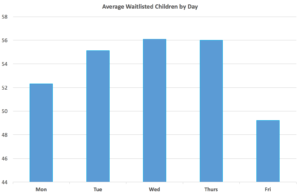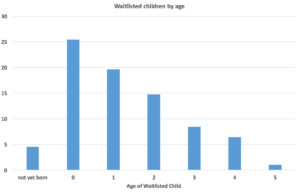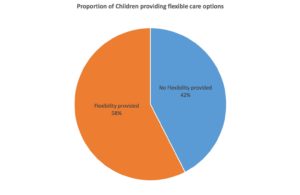A recent report by Colliers International states that in the childcare industry, occupancy rates average between 50%-70% (regional) and 80% (metro). Most centres need to be operating at 70% to be profitable.
Many centres have extensive waitlists, with parents waiting years on waitlists. But still, hitting the elusive 100% occupancy seems difficult. Why does this happen? Something is not adding up.
With every licensed place at a centre worth on average $5000 pa, it is worth chasing this magic number.
Here are some factors that can affect occupancy rates and tips on how to turn it around.
1. Anticipating Vacancies
Do your parents give you adequate notice when their child is departing your centre? Most terms and conditions mandate that 4 weeks notice is required, don’t be afraid to enforce the payment of these 4 weeks. Consider having strict terms around the Jan-Feb period when some parents cover options by requesting and committing to more days of care than they intend to maintain.
Ensure you make offers to fill anticipated vacancies prior to the actual departure dates. With the right systems in place, this can be seamless with a new booking commencing as soon as the day becomes available.
2. Is your waitlist current, valid and engaged?
Stay in touch with your waitlist, check-in in regularly to ensure they still require care. Many families are on multiple centres waitlists, and are unlikely to advise you when they have taken a place at another centre.
There is nothing more frustrating than calling to make an offer, leaving a message, waiting and never hearing back. That state of limbo whilst trying to fill a vacancy. A simple email every quarter can mean that when a vacancy becomes available you can immediate connect with families that have recently engaged with your centre and confirmed they are still interested in care.
Validating your waitlist is crucial to your efficiency.
3. Less popular days of the week

When you know the less popular days you can encourage new families to consider these days as an offer for care is more likely.
Consider arranging a regular incursion / extra curricular activities on this day eg. karate or music to incentivise families
4. Short waitlist for the 3 / 4 year old rooms

According to an Australian Government Productivity Report in ECEC (Feb 2015) the average operating costs for the care of 0 to 2 year olds in long day care are more than double that of children aged 3 to 5 years old. So focusing effort on establishing higher occupancy in the kinder rooms can result in double the profit outcome (than the babies rooms).
Because the waitlists are shorter in the kinder room, we need to engage with parents to discover if they have flexibility with their requested days of care.

Have a clear set of priority rules that you communicate to parents, encourage them to provide additional days and work at best utilising this flexibility.
In a recent example at a high occupancy centre (>95%) they ran allocations for 2017 with and without flexible preferences from families. When using their flexibility we were able to increase their annual allocations by 7 permanent places per week (mostly on Fridays!). This outcome reflects over $40k in revenue upside for the 2017 period.
To find out more about how you can adopt these practices at your centre why not get in touch


